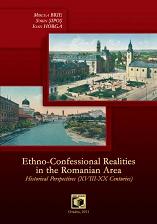The Emmigration of the Muslim Element from Dobruja
The Emmigration of the Muslim Element from Dobruja
Author(s): Cătălin NegoiţăSubject(s): Politics / Political Sciences
Published by: Editura Universitatii din Oradea
Keywords: Muslim; Dobruja; Tatar; T urk; Emigration
Summary/Abstract: The Turkish – Tatar community in Dobruja was formed during centuries, after successive waves of volunteer and forced colonization. The Tatars were the first to appear in the Danubian region, a part of them remaining in the area, after the great invasion in 1241. Between 1262 and 1264, the Byzantines colonize a group of Seljuk Turks in Anatolia, led by Sari Saltuk Dede, in Babadag. After progressively conquering Dobruja, in 1418, 1462 and 1484, the sultans promote an intense and systematic colonization with Muslim elements in this border province, thought to be a great strategic importance. With time, an extremely coherent Muslim wall is formed in the region and in 1878, after the Congress of Berlin, the most people in Dobruja were Muslims. Turkish – tatar denizens’ situation did not get any better during the Romanian administration. Chronicle poorness, lack of equal opportunities, illiteracy, the tense situation in Southern Dobruja, comitadjis’ attacks and corrupted clerks’ insults made a part of this population immigrate. The mirage of Anatolia had risen and Kemal Ataturk’ emissaries were traveling through Dobruja looking for colonists for the plentiful uncultivated territories in Asia Minor. In 1936, Romania and Turkey, sign a convention which brought under regulation volunteer emigration of the Muslim element from Dobruja, the first one of this type in a continent marked by deportations and massive displacements of population.
Journal: Eurolimes
- Issue Year: 2011
- Issue No: Suppl02
- Page Range: 305-319
- Page Count: 15
- Language: English
- Content File-PDF

